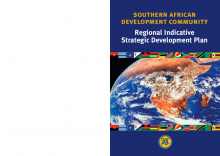The Regional Indicative Strategic Development Plan of SADC is a comprehensive 15–year strategic roadmap, which provides the strategic direction for achieving SADC’s long term social and economic goals. It also provides the SADC Secretariat and other SADC institutions with clear guidelines on SADC’s approved social and economic priorities and policies and therefore, enhancing their effectiveness in discharging their facilitating and coordinating role. It was approved by SADC Summit in 2003 and its effective implementation began in 2005.
The Plan re-affirms the commitment of SADC Member States to good, political, economic and corporate governance entrenched in a culture of democracy, full participation by civil society, transparency and respect for the rule of law. The ultimate objective of the Regional Indicative Strategic Development Plan is to deepen the integration agenda of SADC with view to accelerating poverty eradication and the attainment of other economic and non-economic development goals.
It lists the twelve priority areas identified by SADC Council in which action must be taken in order to achieve the overarching goal of regional integration. The Regional Indicative Strategic Development Plan provides milestones and targets for each priority area.
The Plan also briefly analyses the SADC Framework for integration, economic, human and social trends as well as identifying gasps and current policies and strategies in place within SADC. Issues of resources mobilisation are also reflected upon and the broad principles for the institutional mechanisms required for successful implementation of the plan are presented. A specific framework for monitoring and evaluating the Regional Indicative Strategic Development Plan is also outlined.

